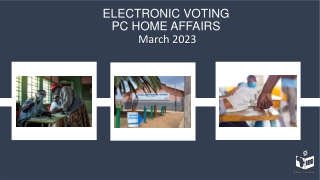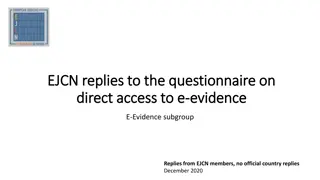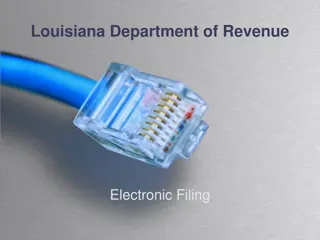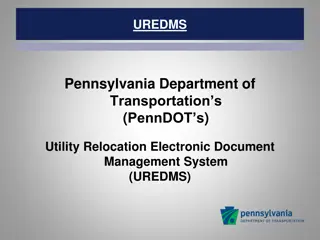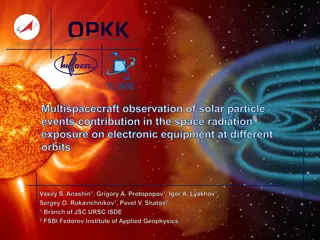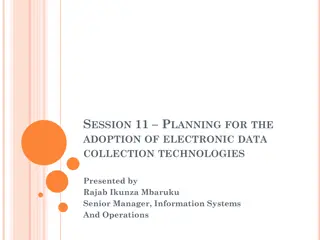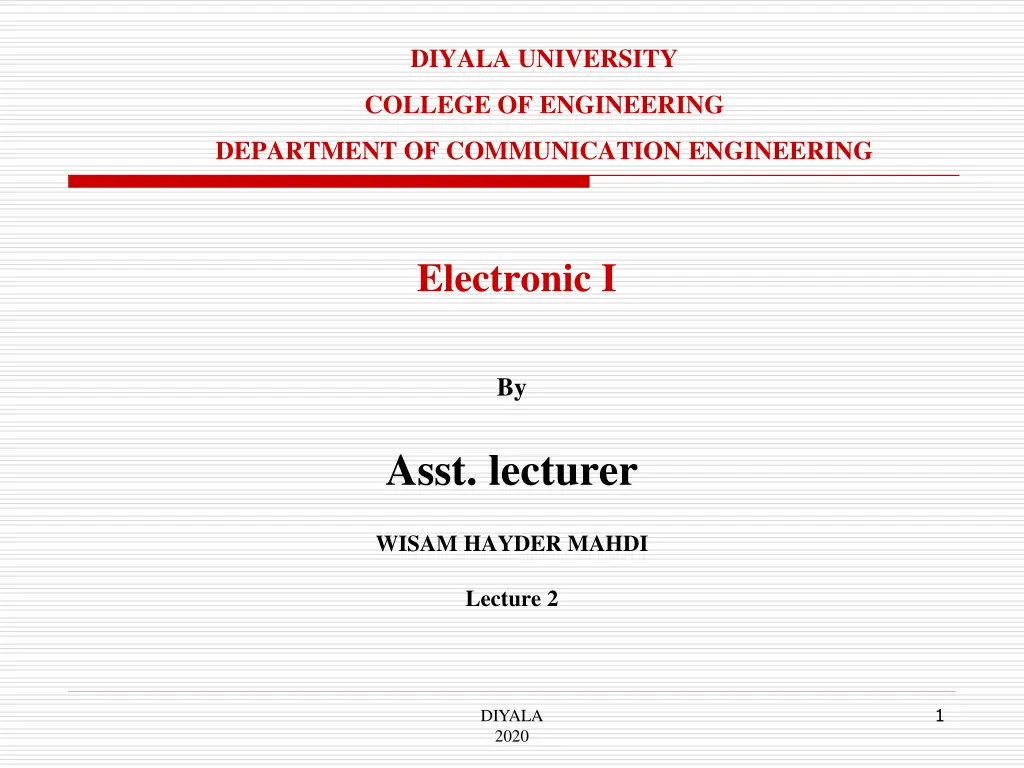
Understanding Transistor Categories and Configurations in Communication Engineering
Explore the classification of bipolar junction transistors into general-purpose/small-signal, power transistors, and RF transistors. Learn about common emitter, common collector, and common base configurations in transistor circuits for effective electronic design in communication engineering.
Download Presentation

Please find below an Image/Link to download the presentation.
The content on the website is provided AS IS for your information and personal use only. It may not be sold, licensed, or shared on other websites without obtaining consent from the author. If you encounter any issues during the download, it is possible that the publisher has removed the file from their server.
You are allowed to download the files provided on this website for personal or commercial use, subject to the condition that they are used lawfully. All files are the property of their respective owners.
The content on the website is provided AS IS for your information and personal use only. It may not be sold, licensed, or shared on other websites without obtaining consent from the author.
E N D
Presentation Transcript
DIYALA UNIVERSITY COLLEGE OF ENGINEERING DEPARTMENT OF COMMUNICATION ENGINEERING Electronic I By Asst. lecturer WISAM HAYDER MAHDI Lecture 2 1 DIYALA 2020
Transistor Categories Manufacturers generally classify bipolar junction transistors into three broad categories: 1- General-Purpose/Small-Signal Transistors:- General purpose/ small-signal transistors are generally used for low- or medium-power amplifiers or switching circuits. Figure (1) show small signal transistors. Figure (1) Small Signal Transistors 3
Transistor Categories 2- Power Transistors: - Power transistors are used to handle large currents (typically more than 1 A) and/or large voltages. Figure (2) Examples of Power Transistors. 4
Transistor Categories 3- RF Transistors: - RF transistors are designed to operate at extremely high frequencies and are commonly used for various purposes in communications systems and other high frequency applications. Figure (3) show examples of RF transistors. Figure (3) show examples of RF transistors 5
Transistor configurations Objective: Shows the transistor connection configurations and the difference between them. As we have seen, the bipolar transistor is a three- terminal device. Three basic single transistor amplifier configurations can be formed; depending on which of the three transistor terminals is used as signal ground (i.e. which terminal is common to both the input and the output side of the configuration). 6
Transistor configurations These three basic configurations are appropriately called common emitter, common collector and common base. Figure (4) shows the three basic configurations for npn transistor. 7
Transistor configurations Figure (4) transistor configuration 8
Common Base Configuration In figure (5) the npn and pnp transistor is shown in common base (CB) configuration. The common base terminology derived from the fact that the base is common to both the input and output sides of the configuration. In addition, the base is usually the terminal closest to, or at, ground potential. 9
Common Base Configuration Figure (5) common base configuration for npn and pnp transistor. 10
Common Base Configuration In the dc mode the levels of ?? and ?? due to the majority carriers are related by a quantity called alpha (?dc) and defined by the following equation: Where ?? and ?? are the levels of current at the point of operation and ?dc 1, or for practical devices: 0.900 ?dc 0.998. Since alpha is defined solely for the majority carriers and from Fig. 6 thats below 11
Common Base Configuration The input set for the common base amplifier as shown in figure (7) relates an input current (??) to input voltage (???) for various levels of output voltage (???). The effect of (???) in the input characteristics is because the increasing of (???) will increase the width of the depletion region at the output junction diode. 12
Common Base Configuration Figure (7) input characteristics for npn transistor The curves of figure (8) are known as the output or collector characteristics. There are three basic regions as indicated in the figure. These regions are : 13
Common Base Configuration The Active region: the collector-base junction is reverse-biased, while the base-emitter junction is forward-biased. The Saturation region: the collector-base and base-emitter junctions are forward-biased. The cutoff region: the collector-base and base emitter junctions of a transistor are both reverse biased Figure (8) collector characteristics for npn transistor 14
Common Base Configuration When ?? =0 the collector current is simply that due to the reverse saturation current ???. The notation most frequently used for ???on data and specification sheets is ????. The ratio of the dc collector current (??) to the dc emitter current (??) is the dc alpha ?? 15
Common Emitter Configuration Figure (9) shows a common-emitter configuration for pnp and npn transistors. The common-emitter (CE) configuration has the emitter as the common terminal, or ground, to an ac signal. ???forward biases the base-emitter junction, and ??? reverse-biases the base collector junction. This configuration is the most frequently encountered transistor configuration. 16
Common Emitter Configuration Figure (9) Common Emitter Configuration. 17
DC Beta (DC) The common-emitter, forward-current, amplification factor (or dc current gain) is the ratio of the dc collector current ((IC) to the dc base current ((IB) and is designated DC Beta (( (( DC ?? ?? ?? DC). DC DC= ?? Typical values of DC higher. DCrange from less than 20 to 200 or Example Determine the dc current gain DC emitter current IE Efor a transistor where IB= 50 ? and IC= 3.65 ??. DCand the 18
Two sets of characteristics are necessary to describe fully the behavior of the common-emitter configuration: One for the output or collector-emitter circuit and the other for the input or base-emitter circuit. Both are shown in Fig. (10). 19
Figure (10) Characteristics of a silicon transistor in the common-emitter configuration: (a) collector characteristics; 20
Figure (10) Characteristics of a silicon transistor in the common-emitter configuration: (b) base characteristics. 21
When the base-emitter junction is forward-biased, it is like a forward-biased diode and has a nominal forward voltage drop of transistor in the on or active region the base-to emitter voltage is 0.7 V ? ?? ?? ? = 0.7? ? ? ?? ?? ? ? ?? ?? ?? ?? ?? ?? ? and 0.3V for ge??????? 22
There are three basic regions as indicated in the figure (10a). These regions are 1- The Active region: the collector-base junction is reverse-biased, while the forward-biased. base-emitter junction is 2- The Saturation region: the collector-base and base-emitter junctions are forward-biased. When the base-emitter junction becomes forward-biased and IB is increased, IC also increases and ??? result of more drop across the collector resistor (???= ???- ????). decreases as a 23
This is illustrated in Figure (11). When ???reaches its saturation value, ???(sat), the base collector junction becomes forward-biased and ?? increase no further even with a continued increase in ??. can ???(sat) for a transistor occurs somewhere below the knee of the collector curves, and it is usually only a few tenths of a volt. 24
DC Beta (DC) Figure (11) 25
3- The cutoff region: the collector-base and base-emitter junctions of a transistor are both reverse-biased. When ??=0, the transistor is in the cutoff region of its operation. This is shown in Figure (12). With the base lead open, resulting in a base current of zero. Under this condition, there is a very small amount of collector leakage current, ????, due mainly to thermally produced carriers. Because ????is extremely small, it will usually be neglected in circuit analysis so that ??? = ??? 26
Figure (12) 27

